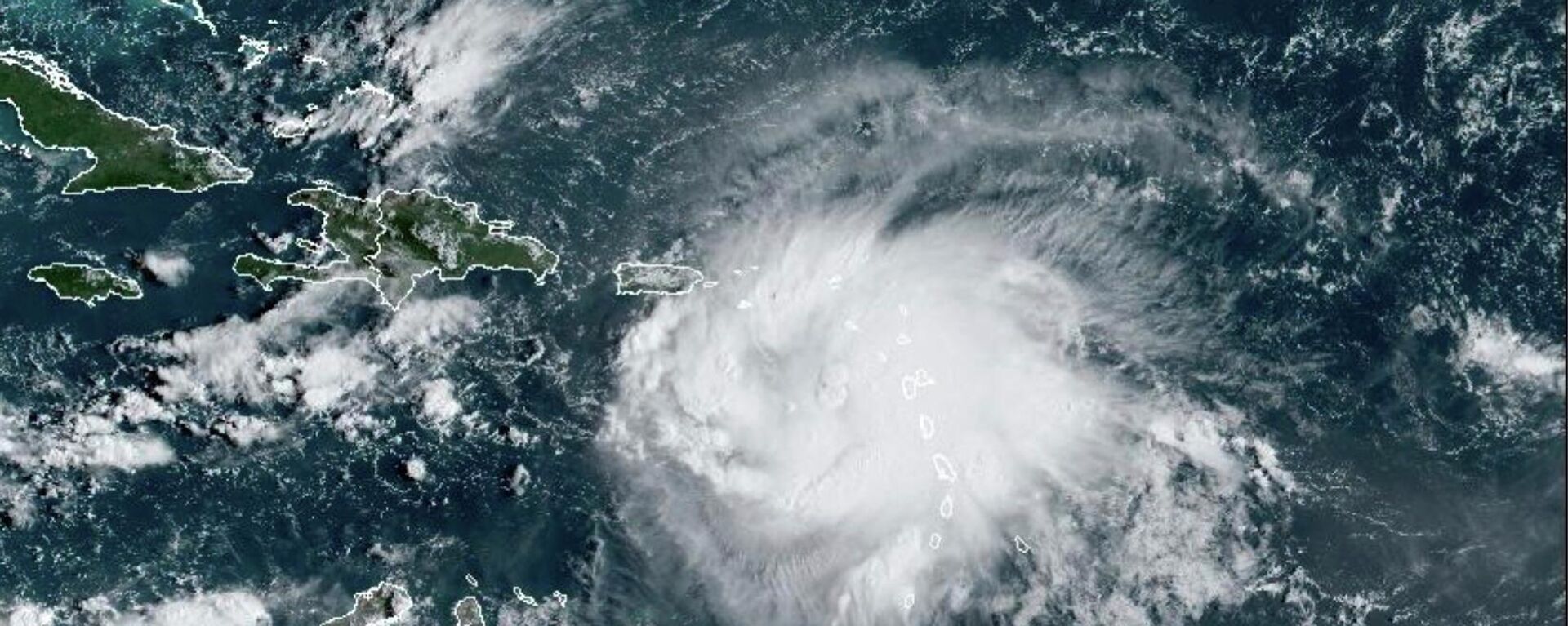Ian Strengthens Into Hurricane, Cuba Prepares For Flooding as Florida Continues Evacuations

© AP Photo / Rebecca Blackwell
Subscribe
On Monday, tropical storm “Ian” turned into a major hurricane. The storm, which began with sustained wind speeds of 65 miles per hour on Sunday night, has continued to strengthen and is predicted to reach a Category 3 hurricane or higher by Tuesday.
Hurricane Ian is strengthening into a Category 3 storm and is expected to become a Category 4 storm in the Gulf of Mexico by midweek, according to AccuWeather. On Monday at 2 p.m., Ian had sustained winds of up to 85 mph and was tracked moving north-northwest at 13 mph, according to the National Hurricane Center.
Currently, Hurricane Ian is heading north for western Cuba before it will collide with Florida. The Cayman Islands and the Cuban provinces of Isla de Juventud, Pinar del Rio, and Artemisa are in Hurricane Ian’s path, where Cuban authorities have been forced to suspend classes in Pinar del Rio province and have planned evacuations starting on Monday for the provinces which are expected to be hit by the extreme hurricane by Monday evening or early on Tuesday.
“Cuba is expecting extreme hurricane force winds, also life-threatening storm surge and heavy rainfall,” said Daneil Brown, the United States National Hurricane Center senior specialist.
The hurricane center added that Ian is not expected to spend “much time” over western Cuba before it strengthens over the southeastern Gulf of Mexico on Tuesday.
Cayman Islands Premier Wayne Panton announced in a video on Sunday that government officials were handing out plywood and sandbags so that residents could “safely weather this storm.” “We must prepare for the worst and absolutely pray and hope for the best,” he added.
Cuba could be hit with “heavy rainfall, flash flooding, and possible mudslides,” according to the hurricane center.
Ian could be the first major hurricane to slam into Florida since the Category 5 storm known as Hurricane Michael hit the state in 2018, causing $25 billion in damage and killing at least 45 people.
“Ian is going to be a large and powerful hurricane in the eastern Gulf of Mexico and spread its impacts over a large portion of the Florida peninsula,” Jamie Rhome, the acting director of the National Hurricane Center, said at a briefing earlier Sunday.
Florida has begun ordering evacuations and President Joe Biden declared a state of emergency for the state on Saturday. Florida is preparing for possible tornadoes to sweep through the Florida Keys and the southern and central parts of the state.
#Ian is expected to be a major hurricane in the eastern Gulf of
— National Weather Service (@NWS) September 26, 2022
Mexico during the middle of this week. Regardless of Ian’s exact track, there is a risk of a life-threatening storm surge, hurricane-force winds, & heavy rainfall along the west coast/Panhandle of Florida by mid-week pic.twitter.com/koVmW9yrtJ
Waves rising 8 feet and 10 inches of rain could mean flooding in coastal communities in the Tampa Bay area, where Hillsborough County has announced the suspension of classes through Thursday and is preparing its schools as shelters for those being evacuated.
Hurricane Ian could hit Florida as early as Tuesday and bring disastrous effects on Wednesday, with wind speeds expected to reach 111 mph or greater. More than 15 million people will be affected by Hurricane Ian across the state of Florida including Tampa, Orlando, Tallahassee, and Jacksonville.
“We tell people even if they’re lifelong Floridians like myself, this is something that we haven’t seen in our lifetime,” said Rick Davis, a meteorologist at the National Weather service’s Tampa office. “So we definitely need to take it seriously.”
On Sunday, Florida residents began preparing for Hurricane Ian by buying food, water, batteries and medicine as well as radios and sandbags in anticipation of flooding.
“It’s better to be prepared than sorry later,” said Jose Lugo, an Orange County resident. “I was in Puerto Rico visiting my parents a couple days before Fiona hit. I was helping them out, and now I’m here helping myself and everybody else.”


